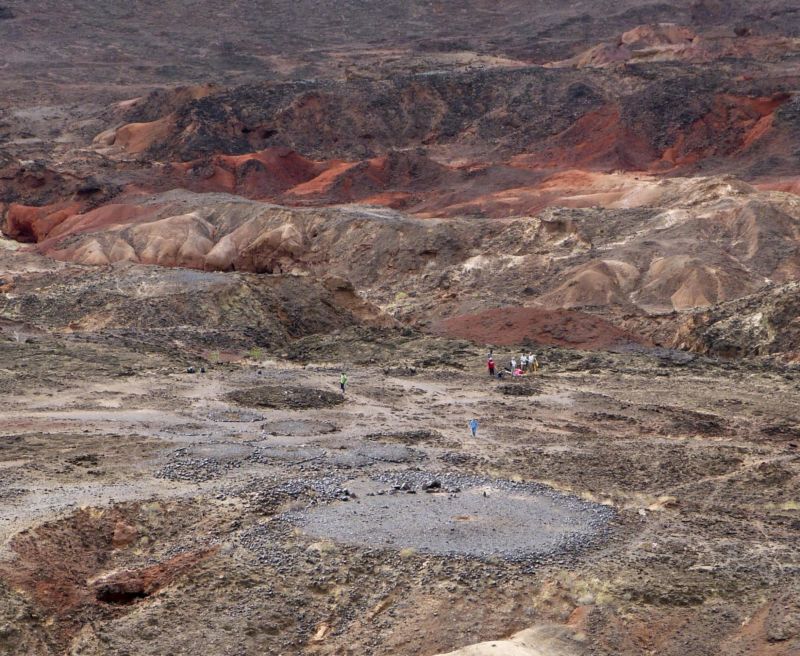Archaeologists explore East Africa’s ancient monumental cemeteries
Ars Technica » Scientific Method 2018-08-21

Enlarge (credit: Hildebrand et al. 2018)
Large monumental cemeteries line the shores of Kenya’s Lake Turkana: hundreds of tightly-packed graves beneath round stone platforms ringed with boulders and basalt columns, each flanked by its own chain of smaller stone circles and cairns. To learn more about the people who built it, archaeologists recently excavated parts of the largest and oldest of these monuments, and surveyed the site with ground-penetrating radar. The results suggest that Kenya’s ancient herders constructed them as a communal effort to cope with an unstable environment and a shifting cultural frontier.
A crowded ancient cemetery
Around 5,000 years ago (according to radiocarbon dating of burials), people started clearing away deep drifts of beach sand on a peninsula jutting out into Lake Turkana, digging down to the sandstone bedrock and shoring up the sides with large, flat slabs of sandstone. Then they started digging into the soft sandstone floor of the 30 meter-wide pit, carving out shallow, closely-spaced graves.
Archaeologist Elisabeth Hildebrand of Stony Brook University and the Turkana Basin Institute and her colleagues excavated a 2m by 2m test area in the center of the pit and another at the edge. Based on the number of people buried in just those two small spaces, they estimate that the crowded cemetery at the heart of the Lothagam North Pillar Site holds at least 580 graves.